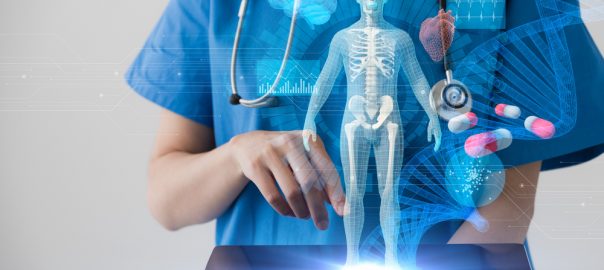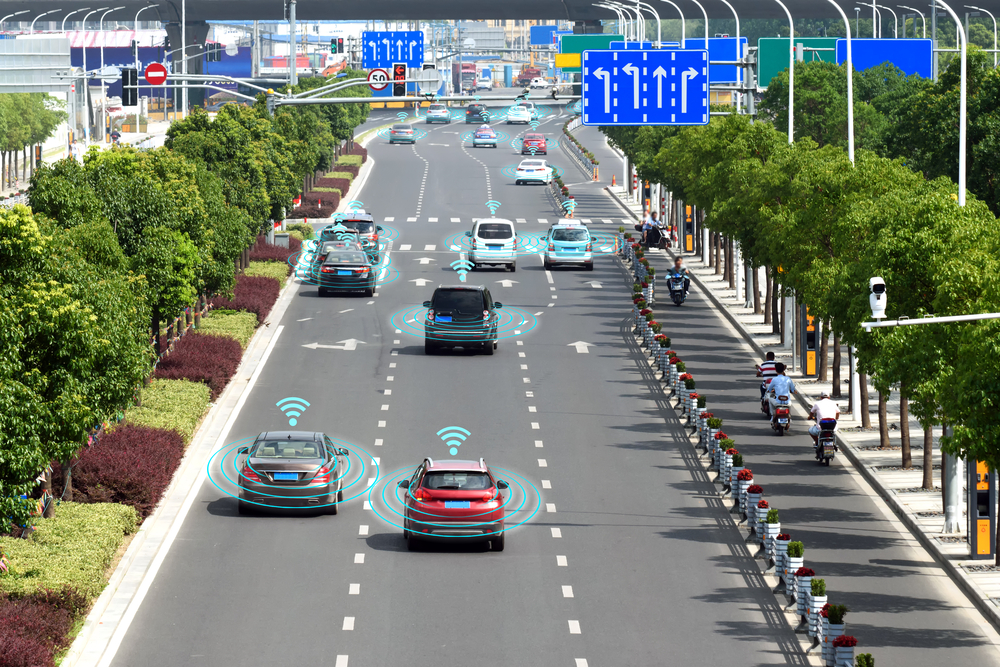Intelligent Automation (IA) is more than a way to revolutionize business and save money — it also has the potential to save lives by the millions and increase healthy life expectancy. IA can be applied to medical diagnosis and research to prevent unnecessary deaths. In addition, it provides more equitable access to healthcare worldwide. IA can also be used in transport to augment the abilities of human drivers and prevent deaths and injuries from traffic accidents.
Preventing deaths through diagnosis and research
More than 70% of deaths worldwide are caused by chronic non-communicable diseases, such as cardiovascular disease, cancer, diabetes, and respiratory illnesses.
An important characteristic of these diseases is higher recovery rates the earlier the disease is detected. Leveraging machine learning (ML), IA can save lives by analyzing scans and other medical data, such as blood pressure, to produce quick and reliable diagnoses. ML can process lung or breast scans in minutes, or even seconds, where a human would take hours, but what’s more remarkable is its advantages over doctors when it comes to identifying cancer.
Another common factor among these diseases is the potential to find cures through research. ML helps with innovation in medical research (e.g., by simulating the combination of molecules). It also plays a vital role in automating the documentation and checking of clinical trials, freeing up human researchers for higher-level cognitive tasks, and making the research process quicker and more efficient.
Preventing deaths caused by medical errors
Medical errors are a sad and often overlooked element of modern healthcare. In the U.S., they cause over 250,000 deaths per year, which is higher than any other single factor except heart disease and cancer.
In 2006, Emily Jerry, a two-year-old recovering from cancer, tragically died after a pharmacy technician gave her 20 times the recommended concentration of intravenous saline solution. Emily’s father wrote, “Medical-care workers are dedicated, caring people, but they are human. And human beings make mistakes.”
IA, in conjunction with human professionals, can double check prescriptions and identify discrepancies from doctors’ instructions or medical best practices. IA is never tired or distracted, so it is not vulnerable to lapses in concentration which happen to everyone — but can have disastrous consequences in healthcare.
IA can also monitor patients’ health in real-time. It can alert a nurse or doctor about an emergency based on a patient’s blood pressure, heart rate, or other vital signs. It can even detect patterns that predict heart attacks, strokes, or sepsis in advance — helping to save lives and free up doctors’ and nurses’ time from data collection.
Reducing deaths from preventable causes in developing countries
The global disparity in wealth and resources means many people in the developing world die of diseases that are easily preventable in wealthier countries. This is largely due to inadequate access to healthcare. According to the World Health Organization (WHO), there is a global shortage of 4.3 million healthcare professionals.
IA technology brings healthcare to anyone with access to a smartphone — which is an increasing proportion of people even in regions lacking other infrastructure and technology. Applications can link patients with doctors remotely, and diagnostic tools can partially take a doctor’s place by diagnosing skin conditions, burns, and chronic wounds based on digital photos.
Medical care often requires physical supplies, such as vaccines or donated blood, which cannot be delivered digitally. To provide these life-saving supplies to remote locations without adequate road infrastructure, Zipline International uses innovative, intelligent drones for delivery.
Reducing deaths from traffic accidents
Road incidents can be deadly and cause permanent disabilities. Human error is a factor in most road accidents, but there is potential for self-driving cars or IA-assisted driving technology which can save lives by reducing or eliminating the human factor. Research from the U.S. Department of Transport estimates 94% of traffic accidents are caused by human error.
Even before fully autonomous self-driving cars become the norm, IA can assist human drivers and help them drive more safely. Cars can already be augmented with kits allowing them to monitor the driver with an internal camera, detect when they become drowsy, and alert them of the risk. Automatic sensors can also be used to augment a human driver’s vision and warn them of unexpected obstacles. Cruise control and assisted parking are further examples of IA technology working with human drivers to help them drive more safely.
Conclusion
Health organizations that want to start embracing the benefits of IA should start with their industry’s most common use cases:
- New patient onboarding and appointment scheduling with the support of automated workflows and cognitive agents
- Patient health monitoring leveraging cameras and sensors in hospital rooms
- Medical diagnosis and drug discovery supported by ML
- Staffing level prediction and real-time adjustment processes
- Automation of invoicing and claims management
- Patient experience improvement through real-time and 24/7 communication
If you start with these smaller, everyday processes and build forward from there, you will be able to embrace IA in ways that make your routines and processes easier from the beginning.
Based on my research and industry expertise, I believe IA technologies could reduce early deaths by 10–30%. In 2017, a 20% reduction in the 56 million total annual worldwide deaths would have meant saving 14 million lives a year — the equivalent of the populations of Switzerland and Singapore.
About Pascal Bornet:
Pascal is a senior advisor to IRPA AI, member of the Forbes Technology Council, author of Intelligent Automation: Welcome to the World of Hyperautomation and is recognized as a Top Voice in Tech with over 300,000 online followers.



 By Pascal Bornet
By Pascal Bornet


